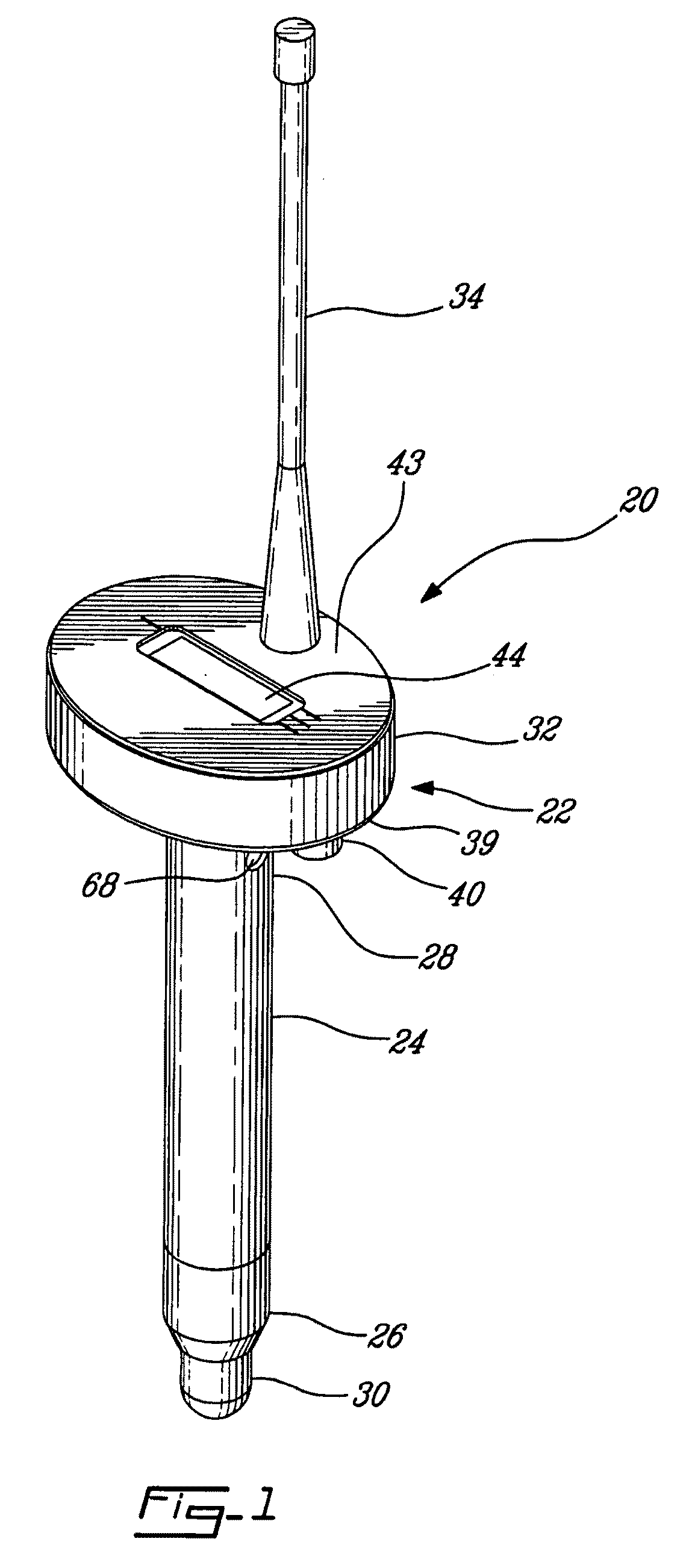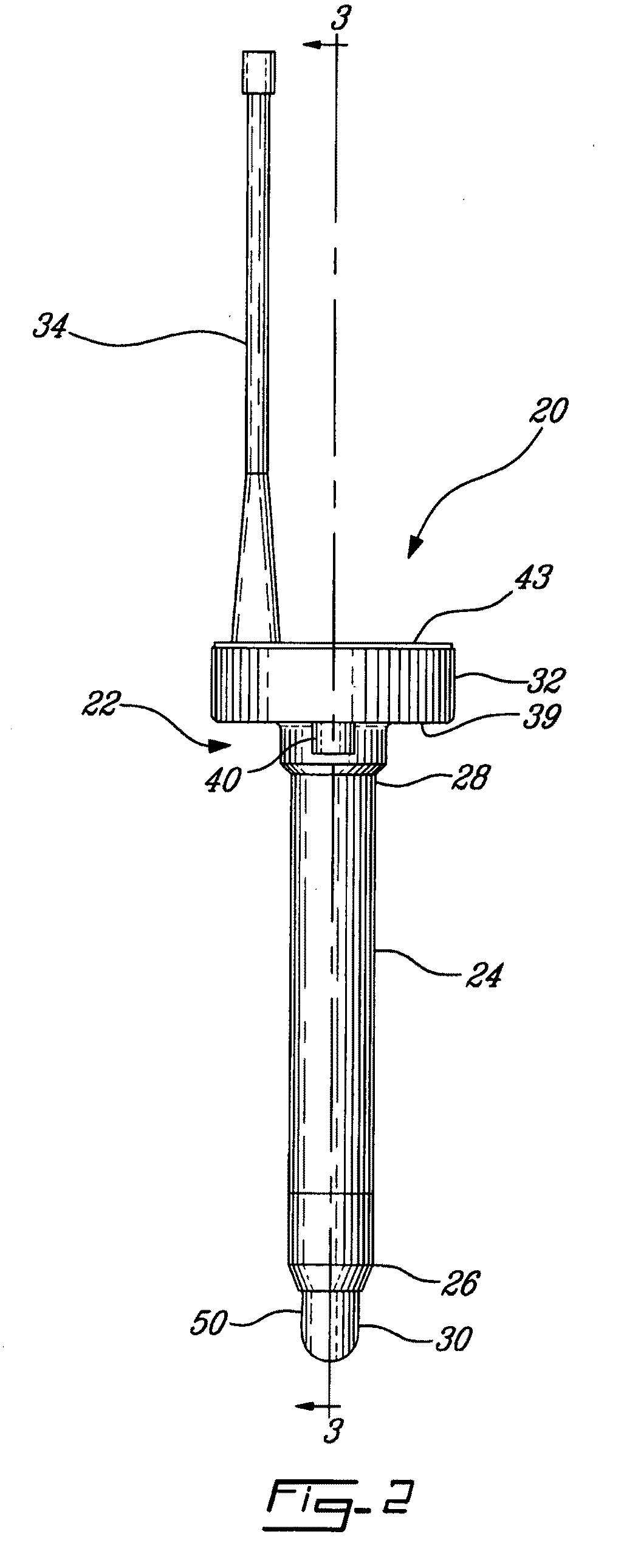Porous medium electrical conductivity sensor
a technology of electrical conductivity and porous medium, applied in the field of sensors, can solve the problems of increasing the risk of groundwater pollution by excess fertilizers or pesticides, causing environmental damage, and causing environmental pollution, and achieve the effect of uniform siz
- Summary
- Abstract
- Description
- Claims
- Application Information
AI Technical Summary
Benefits of technology
Problems solved by technology
Method used
Image
Examples
Embodiment Construction
[0022]FIG. 1 illustrates a salinity sensor 10 for measuring the salinity of a solution in a porous medium such as earthen soil, greenhouse soil or any growing medium used in horticulture, without requiring continuous in-field calibration to compensate for variation of the water content, the structure or the solid phase electrical conductivity of the porous medium. The sensor 10 is calibrated once in factory and does not typically require any periodic calibration in the field.
[0023]The salinity sensor 20 has a body 22 for insertion in the porous medium to be sampled and which includes a tubular housing 24 with a lower end 26 and an upper end 28 and a porous material tip 30, and a head 32 with an antenna 34 which extends out of the porous medium when the tubular housing 24 and the porous material tip 30 are inserted therein. The porous material tip 30 is mounted to the lower end 26 of the tubular housing 24. The porous material tip 30 has a first section which extends in the tubular h...
PUM
 Login to View More
Login to View More Abstract
Description
Claims
Application Information
 Login to View More
Login to View More - R&D
- Intellectual Property
- Life Sciences
- Materials
- Tech Scout
- Unparalleled Data Quality
- Higher Quality Content
- 60% Fewer Hallucinations
Browse by: Latest US Patents, China's latest patents, Technical Efficacy Thesaurus, Application Domain, Technology Topic, Popular Technical Reports.
© 2025 PatSnap. All rights reserved.Legal|Privacy policy|Modern Slavery Act Transparency Statement|Sitemap|About US| Contact US: help@patsnap.com



